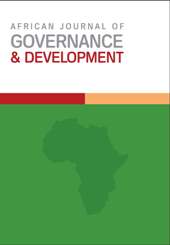Fiscal Decentralisation in Lesotho: A Closer Look at Intergovernmental Fiscal Transfers
DOI:
https://doi.org/10.36369/2616-9045/2025/v14i1a3Keywords:
Decentralisation, Fiscal decentralisation, Subnational government financing, Fiscal gaps, Intergovernmental fiscal transfersAbstract
The concept of fiscal decentralisation is explained to be central to all models of decentralisation of public services to subnational governments. Fiscal decentralisation is generally referred to as the transfer of budget powers in terms of revenue and expenditure from national to subnational governments. Although fiscal decentralisation aims to ensure local financial independence, subnational governments continually experience financial shortfalls. In this regard, intergovernmental fiscal transfers are considered to address the financial gaps and guarantee continuity of public service delivery at subnational spheres of government. To understand transfers, the paper reviews the concept of intergovernmental transfers and explores the nature of the Lesotho intergovernmental transfer system. The study on which the article is based adopted the convergent mixed methodology. The findings indicate that Lesotho uses transfers as the primary source of revenue for subnational structures. Therefore, Lesotho subnational governments depend on transfers as their sole source of revenue, and this constrains the capacity of subnational governments to deliver services. The country does not have an intergovernmental fiscal transfer framework designed to regulate and direct transfers between and among government spheres. The article, therefore, recommends a three-pronged framework that considers the development of a subnational financial management legislative framework that demarcates the subnational financial scope and guides the subnational financial practices and processes; a decision by the country on the degree of revenue devolution to activate local revenue generation; and developing an intergovernmental transfer system based on revenue generation capacity and spending needs of councils to ensure incentive compatibility and secure some degree of equity among districts.




